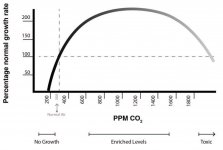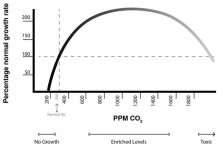I have my tent and lung room working great as far as humidity and temperature are concerned. Plants are vigorous and seem happy, but I want them making tric heads. The CO2 meter reads 575 at daybreak when the light comes on, and gets higher up in the 700 range during the day as the dawg and I migrate toward that part of the house. There are plenty of clip-on fans moving the sit internally.
So my question is, what about the airflow through the tent? Can I use the CO2 reading in any way to determine if the flow is adequate? Does more airflow help build the flowers?
So my question is, what about the airflow through the tent? Can I use the CO2 reading in any way to determine if the flow is adequate? Does more airflow help build the flowers?





